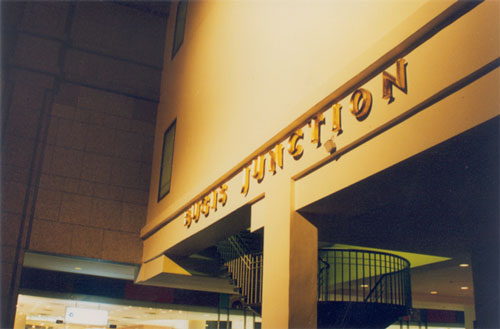It was early in 2000 or 2001 that I took this photo. As the caption (on Flickr) says, “A photo that has eluded me for long. I probably took more than sixteen pictures of this place. I wonder why…” These were the days before the digital camera, when you can take a few hundred photos of one thing, choose the best, and happily delete the others. Film photography was expensive, and perhaps that is why we spent more time composing a photograph and ensuring perfect exposure. But it never comes easily to an amateur. Some exposures (photos) will go bad.
As you can see, I still didn’t get it right, after sixteen exposures. Yet, this has remained one of my favourite photos. Why this place and this name fascinated me then, was also a mystery. (Fifteen years ago, I wasn’t inclined as much to curiosity as I am now.)
Cut to today, after that evening with an elusive photograph, fifteen years later.
I am reading The Spice Route, and early into the book, one and a half decades later, I see the word again. Instantly the elusive photograph comes to mind. Something about travel, photography, and reading, makes perfect sense.
Bugis.
By foreigners — Asian or European — seeking to usurp control of the most obscure extremity of the spice route, all such indigenous operators would be termed ‘pirates’, a pejorative freely applied to any rivals and especially to local seafarers who attempted to defend what they considered their own territorial waters and maritime rights. The Bugis of Makassar, in particular, invited obloquy. Master-shipwrights and excellent navigators who were supposed to be able to detect a reef purely by smell, they darted in their rakish prahus (sailing vessels, sometimes with outriggers) from unsuspected anchorages on the coasts of Borneo and Sulawesi to challenge all rivals. Against monopolistic Europeans the Bugis would continue to wage a rearguard action well into the nineteenth century, by which the term ‘bogey’ or ‘bogy’ was entering common English usage. This may have been a coincidence; but allusion to the spice trade being not uncommon in nursery rhymes, those who as children were hush-hushed to bed by ‘here comes the Bogey-man’ may well originally have been threatened by a ‘Bugis-man’ who, at the helm of a piratical prahu, would certainly ‘catch you if he can’. ~ The Spice Route, John Keay
The online-etymology dictionary that I frequent often, has a different tale. But I did find other references for the etymology of ‘Bogey.‘ The disagreement about the etymology notwithstanding, it was an excitable moment for me, to encounter the word.
*
I am enjoying the coming together of my travel, photography, and reading. The fascination with a word or an image, the context and meaning coming to you, years later, is a wonderful experience, even if it is not new. I recently told a friend, that I watch movies twice; just like I want to visit places, at least twice.
There are times when you can visit places again, without actually going there, and that’s a fine feeling.

